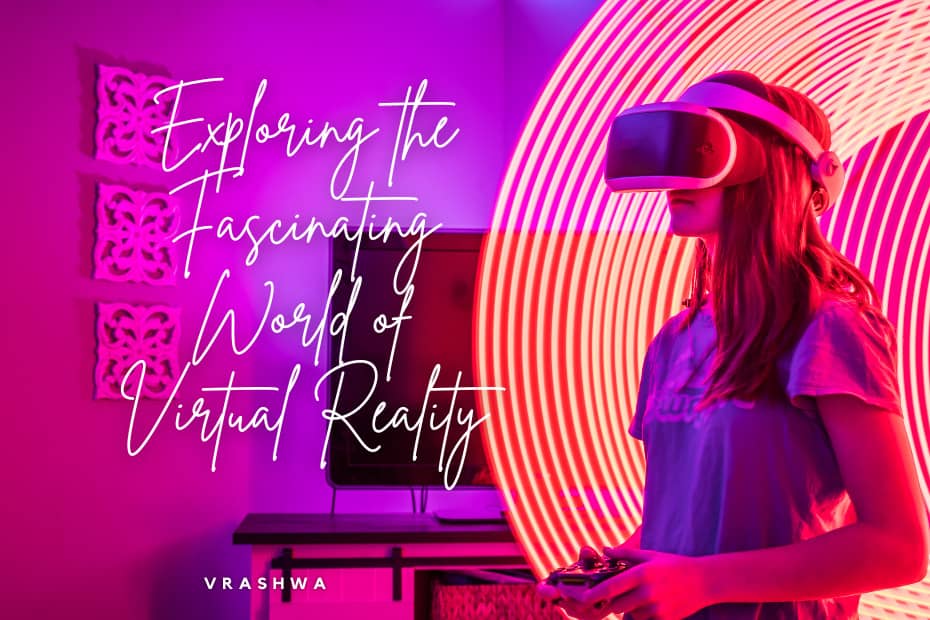Once upon a time, there was a dude named Sam. He was all about that virtual reality (VR) life, but little did he know, he was about to have the scare of his life with the Sam’s Plank Experience VR game.
Sam put on his VR headset and was transported into a world of pixels and polygons; he found himself standing on a seemingly never-ending plank of wood, suspended high above the city skyline. With shaky legs, he inched his way forward, but as he reached the end of the plank, he was met with a heart-stopping drop that made him feel like he was falling. He might have even heard a scream, but we won’t tell anyone.
That’s the power of virtual reality, my friends. It may not always have the most groundbreaking visuals, but the experience can feel incredibly real. But how does it work, you ask?
Well, it’s all about tricking your brain into thinking you’re somewhere you’re not. VR combines visual, auditory, and sometimes even haptic (touch) feedback to create a convincing illusion. By rendering 3D images that respond to your movements in real-time, VR can make you feel like you’re actually inside a virtual world.
And the best part is you don’t even have to buy an expensive VR headset to experience it. You can rent one! That’s right, VR on rent is a thing now. So if you’re not ready to commit to a pricey piece of hardware or want to try out different games or experiences, renting a VR headset might be the way to go.
So go ahead, and try out Sam’s Plank Experience or any other VR game or experience you fancy. Just be prepared to have your mind blown and your heart racing. And don’t worry; we won’t judge if you scream like a little kid.
The Science of Virtual Reality
Virtual Reality, or VR, is not just a fancy entertainment gimmick. There is science behind how VR works, and it all starts with how our brains perceive images.
When looking at a flat image on a screen, your brain knows it’s not real. But things get more complicated when you put on a VR headset. The images you see in VR are projected onto two tiny screens in front of your eyes, creating the illusion of depth.
The secret to this is stereoscopy, where two slightly different images are displayed to each eye. This creates the illusion of depth, making objects in VR feel like they’re right in front of you.
But it’s not just about the eyes. Head tracking is also a crucial part of the VR experience. When you move your head in the real world, your brain knows that your point of view has changed. VR headsets use sensors to detect the movement of your head and adjust the image accordingly, giving you the feeling of looking around a fake world like you would in the real world.
And let’s not forget about 360 audio, which is another critical element in making virtual spaces feel more natural. With 360 audio, the sound is played from different directions, creating the illusion that sounds come from different places in the virtual environment.
These subtle effects work together to create an immersive VR experience that can make you forget that you’re sitting in your living room. It’s no wonder that games like Sam’s Plank Experience can induce such panic – the brain is convinced that the danger is real!
How Our Brain Adapts to VR
Have you ever wondered how you can be transported into a completely artificial world, but your brain still buys it as accurate? Well, let’s dive into the science of how our brains adapt to virtual reality!
Firstly, our brains have never learned to distinguish between computer-generated content and the real world. This is because our brain processes visual information the same way, regardless of where it comes from. So, when we put on a VR headset, our brain accepts it as a natural environment.
Secondly, our brain trusts our sense of sight and uses it as the primary source of information to navigate the world around us. VR developers can manipulate our reality by combining visual cues to create the illusion of depth and texture and make objects appear closer or farther away than they actually are.
Thirdly, our brains fill in the gaps in the virtual world to make it feel more believable. This is why we can’t see everything simultaneously in VR, just like in real life. Our brains only render what we focus on and fill in the rest with our imagination. This helps to create a seamless, immersive experience.
Finally, VR is used in various ways, including exposure and physical therapy. Exposure therapy helps people confront and overcome fears in a safe, virtual environment. For example, someone who fears flying can use VR to simulate a plane ride and gradually work towards overcoming their fear. Physical therapy can use VR to help patients re-learn movements and rebuild strength after an injury.
The Future of VR
Ah, the future! A place where we could finally live out our sci-fi dreams! The VR world is constantly evolving and improving, and it’s exciting to think about what the future holds.
First of all, let’s talk about technology. We’re already seeing VR headsets becoming more affordable and accessible. And with the introduction of wireless VR, it’s now easier than ever to experience virtual reality. But the advancements don’t stop there. Companies are working on improving the resolution of VR screens, creating more realistic haptic feedback, and developing more accurate hand-tracking technology.
In the future, VR could be used to create shared experiences. Imagine attending a concert in virtual reality with your friends who live across the country or even the world! You could also attend conferences and exhibitions or even virtual field trips together.
But with great technology comes great responsibility, and some potential ethical concerns must be considered. For example, some worry that VR could be used to create false memories or even manipulate our thoughts and beliefs. There are also concerns about privacy and data security, as well as the potential impact on our social skills and relationships.
While we can’t predict precisely what the future holds, it’s clear that virtual reality is here to stay. As technology continues to improve and evolve, we’ll have to be mindful of potential ethical concerns and ensure we use it responsibly and beneficially.
Conclusion
Well, folks, we’ve covered a lot of ground here. We’ve explored virtual reality, how it works, and how it affects our brains. We’ve also examined how VR technology is improving and the exciting possibilities for the future.
One of the most fantastic things about VR is how it can transport us to new and exciting places without ever leaving our homes. It’s like having a personal teleportation device! But it’s not just about escapism; VR has real-world applications, like exposure and physical therapy.
As we’ve seen, VR technology is constantly evolving and improving. And with the potential for shared virtual experiences, like attending concerts or conferences, the possibilities are endless.
But with great power comes great responsibility, and potential ethical concerns must be addressed. We need to be mindful of how this technology is used and who it affects.
Though, the potential of VR technology to revolutionize our world is fascinating. Who knows what the future holds? Maybe one day, we’ll be able to live entirely in a virtual world, and our bodies will be nothing more than vessels for our virtual selves. But for now, let’s enjoy the ride and see where this technology takes us!

